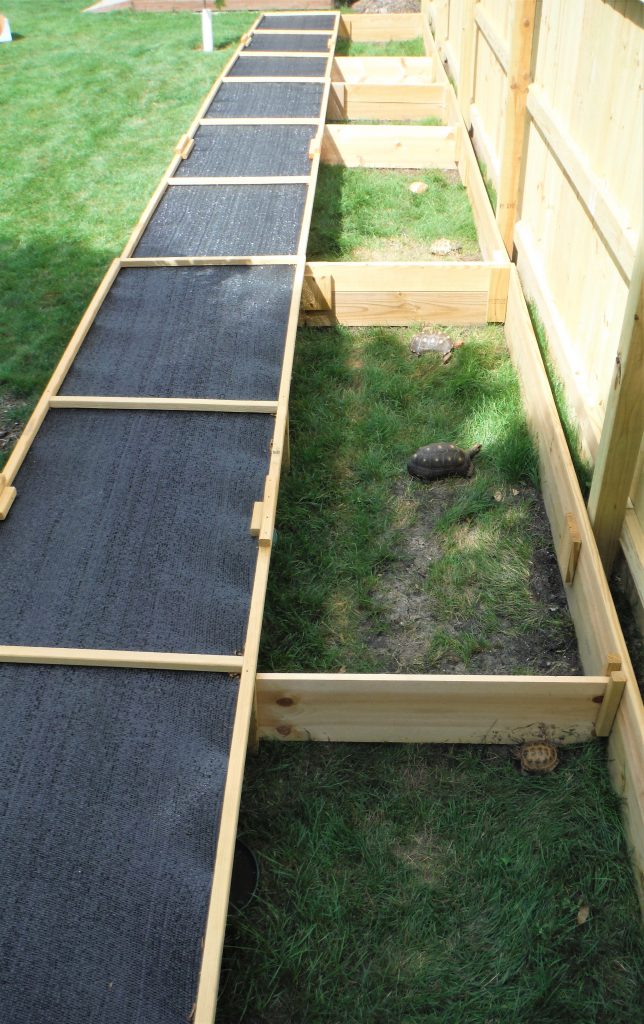
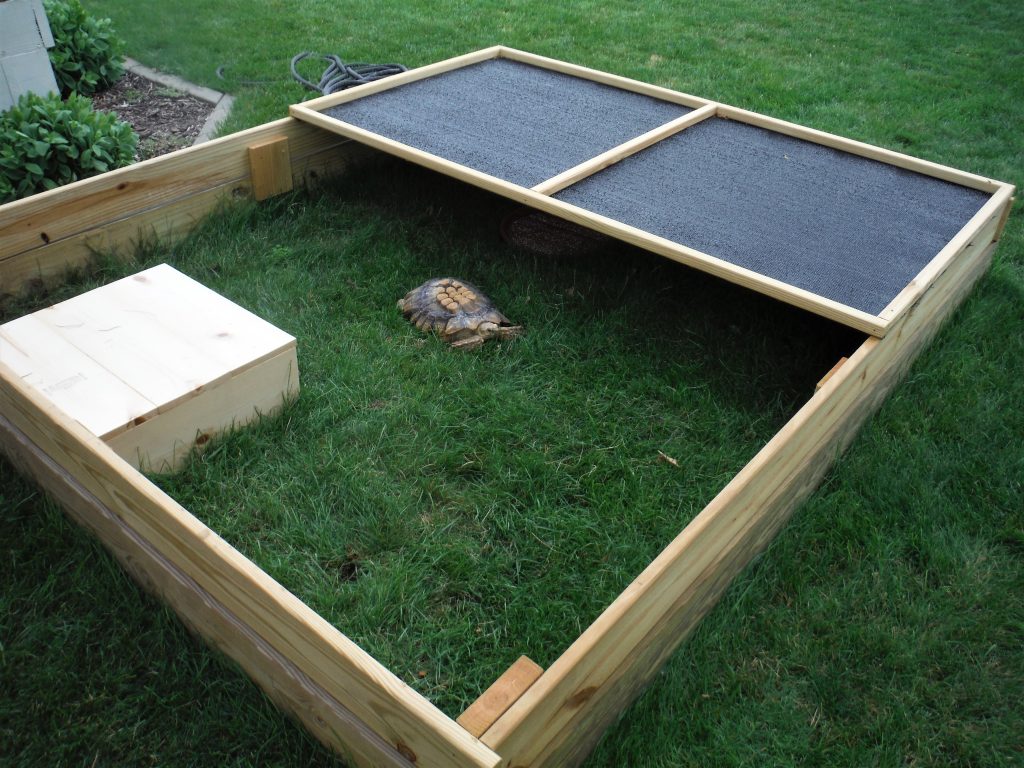
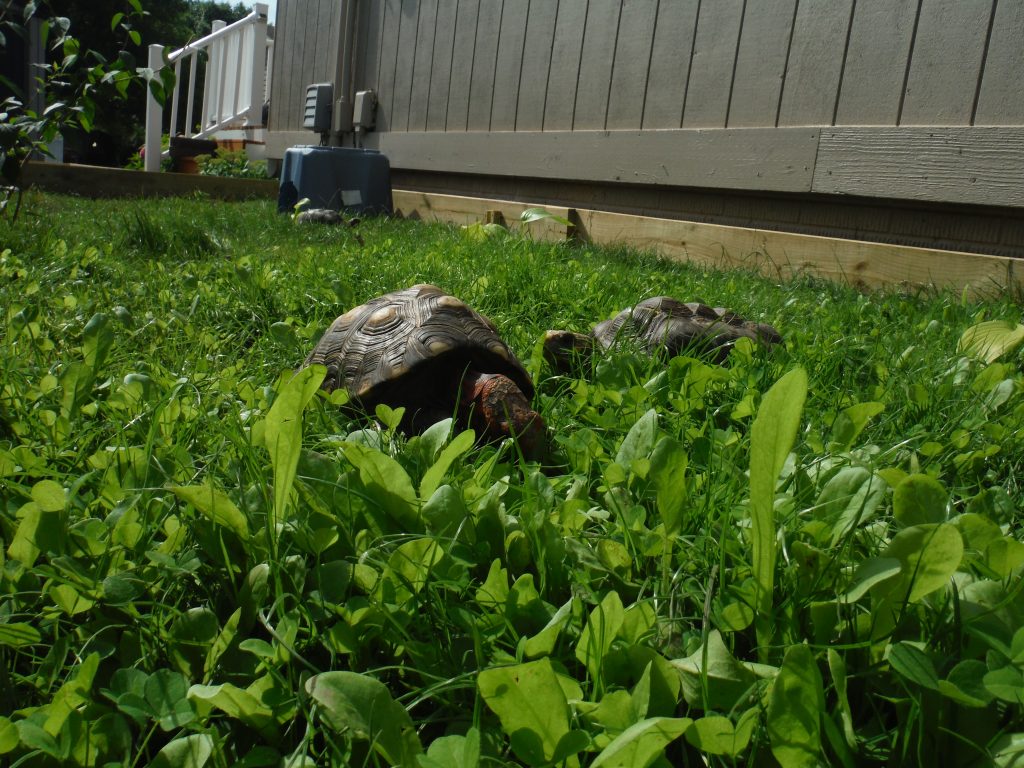
all the pens for following years.
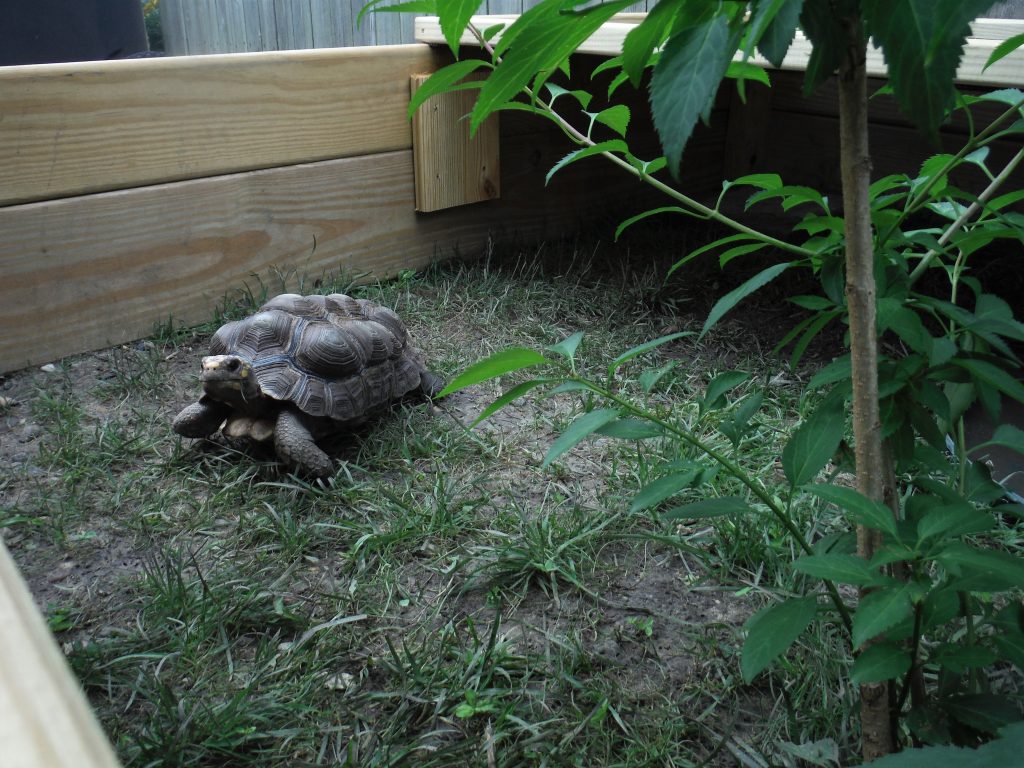
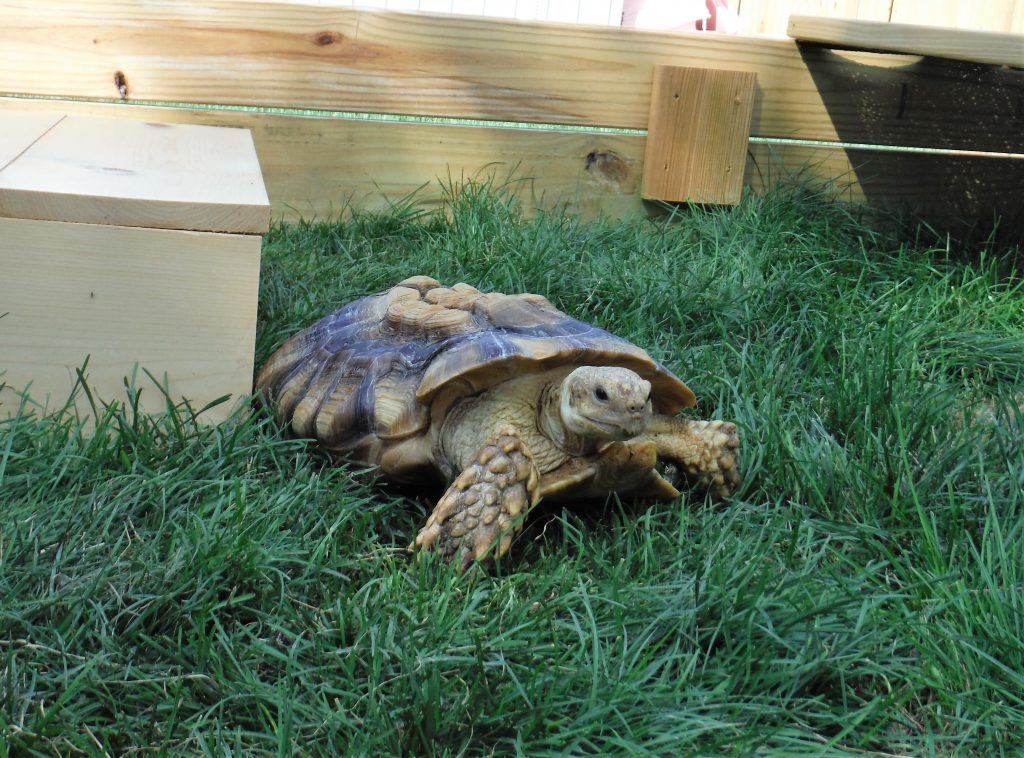
In the summer months, all tortoises are allowed outside full time, and only brought inside when weather is poor. This allows the tortoise to be exposed to natural sunlight as much as possible. It is well known that these animals require UV sources to produce Vitamin D3, which is necessary for proper calcium absorption. While kept indoors, UV bulbs and/or oral vitamin D3 somewhat supplement this need, but can never compare to living outdoors in natural sunlight.
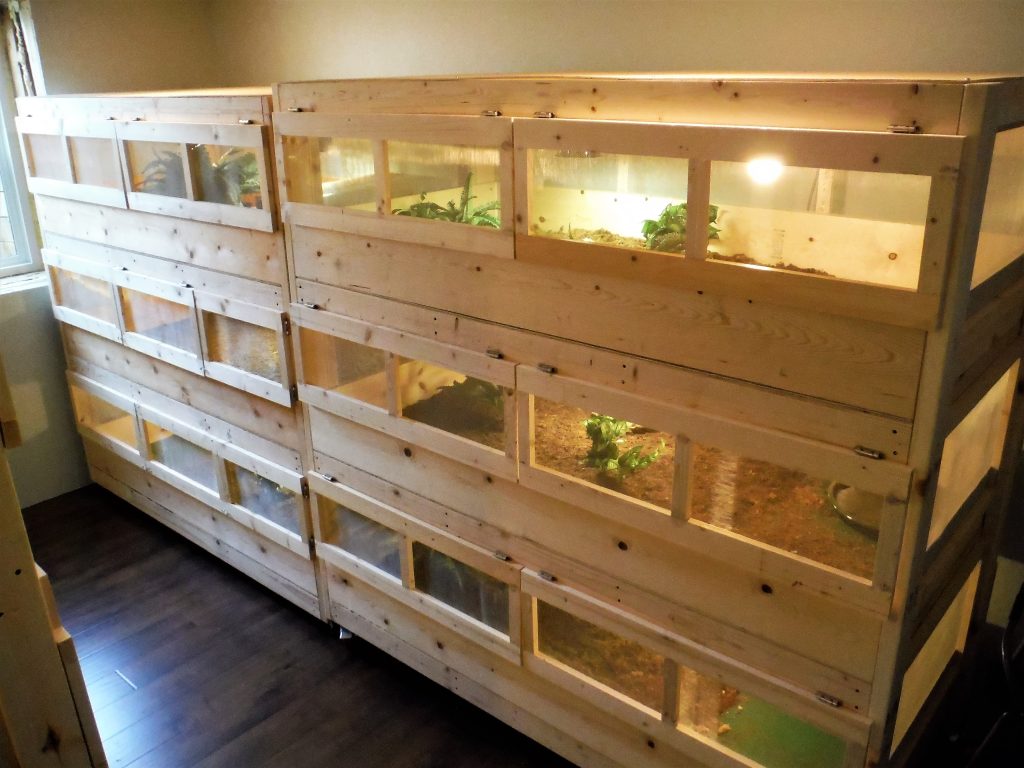
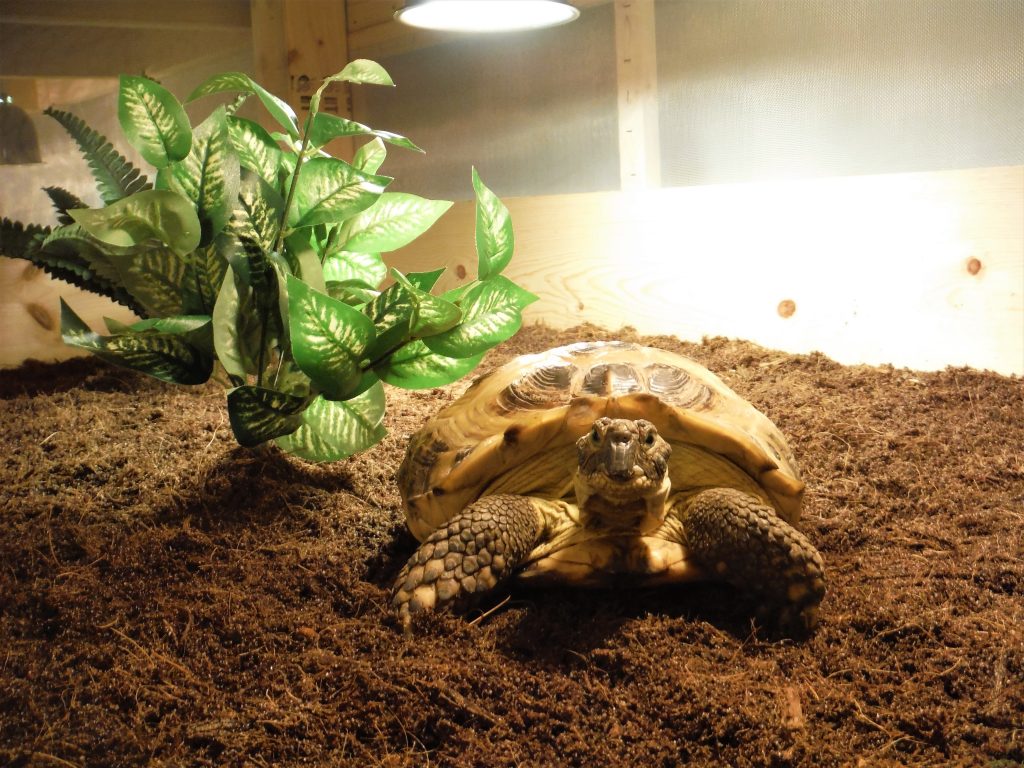
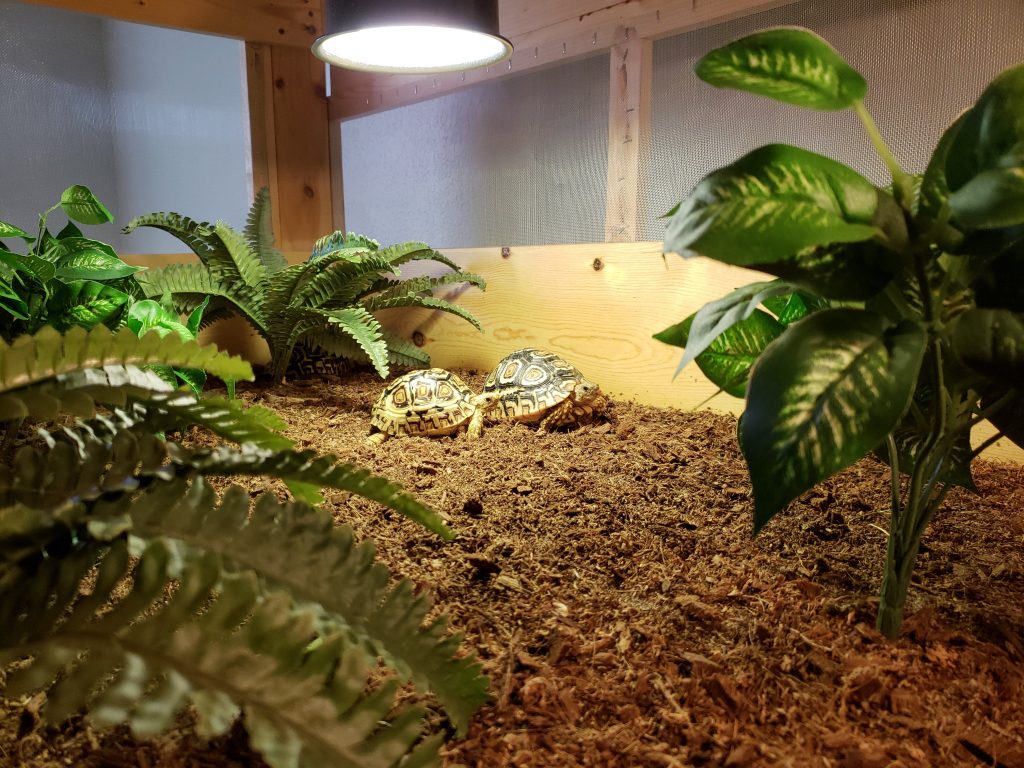

During the winter months, all of our tortoises are housed in a table-type setup. The sizes vary, but are generally 6’x3′ or 7’x4′. Substrate is usually a mix of coconut coir, organic soil, and a small amount of play sand. We generally add a reptile mat in the feeding area (to avoid the accidental ingestion of substrate). The lighting we use is a “combination” bulb, meaning they combine heat and UV source. These are 70-100W mercury vapor bulbs (MVB) by MegaRay. We also add a regular LED light for extra lighting – all set on automatic timers. We use heat guns to check the temperatures often. We also use a solarmeter reader to ensure MVBs are replaced when they are no longer working. The enclosures and tortoises are all religiously sprayed down 2 times a day, and water trays changed daily.